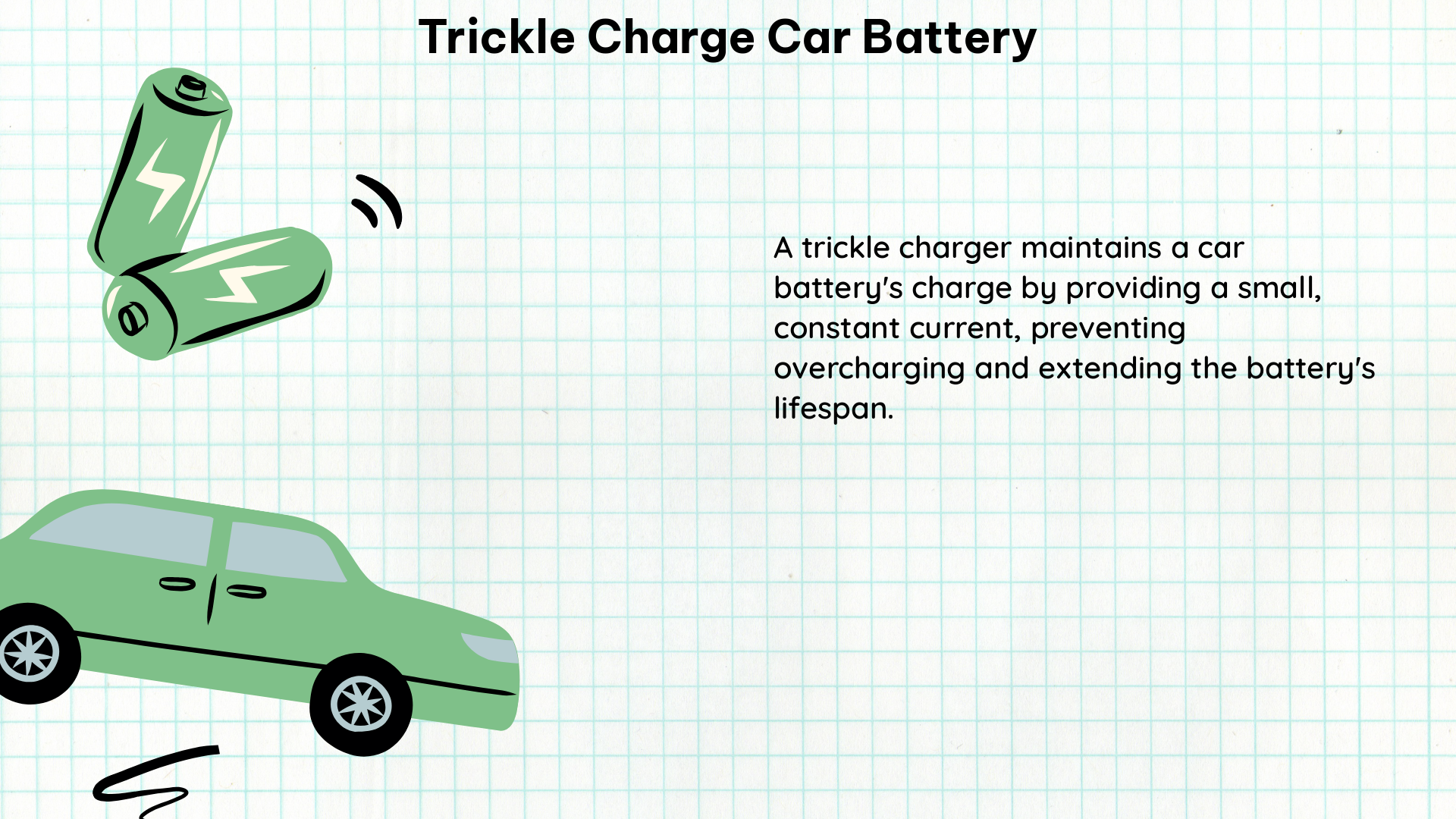A trickle charger is a low-level charging device designed to maintain the charge of a car battery without overcharging it. This type of charger is particularly useful for batteries that are not used frequently, as they can gradually lose their charge over time. In this comprehensive guide, we’ll dive deep into the technical aspects of trickle charging and provide you with a step-by-step manual to ensure your car battery stays in top condition.
Understanding Trickle Charging
Trickle charging is a charging method that delivers a constant, low-level current to a car battery, typically ranging from 10 to 40 milliamperes (mA). This gentle charging process is intended to maintain a fully charged battery rather than recharging a completely depleted one.
The primary benefit of trickle charging is its ability to extend the overall lifespan of a car battery. By applying a gentle, consistent charge, the battery experiences less stress and is less likely to become damaged over time. This is particularly advantageous for batteries that are not used frequently, as they can gradually lose their charge and may struggle to hold a full charge when needed.
Technical Specifications of Trickle Chargers

When it comes to trickle chargers, the output voltage and current are crucial factors to consider. A typical trickle charger will have an output voltage of around 12-14 volts and an output current of approximately 1-2 amps. However, it’s important to note that some poorly designed trickle chargers may not be voltage-regulated, which can lead to an output voltage of 14 volts or more when the battery is fully charged. This higher voltage can potentially damage the battery.
Another important consideration is the charger’s ability to detect the battery’s voltage. Some trickle chargers may not charge at all unless they detect a voltage close to 12 volts in the battery. In cases where the battery is completely flat, it may be necessary to use a different charging method or jump-start the battery before using the trickle charger.
Determining Trickle Charger Effectiveness
To ensure that your trickle charger is working correctly, it’s essential to perform a few checks:
-
Voltage Output Verification: Connect the trickle charger to a multimeter to ensure that it is outputting the correct voltage. If the charger is not outputting the correct voltage, it may need to be replaced.
-
Battery Voltage Monitoring: Check the battery voltage before and after charging to verify that the trickle charger is effectively charging the battery. If the battery voltage does not increase after charging, it may be necessary to replace the battery or use a different charging method.
-
Charging Time Observation: Observe the charging time required for the battery to reach a full charge. Trickle chargers typically take longer to fully charge a battery compared to faster charging methods, but the charging time should be consistent with the charger’s specifications.
Trickle Charging Best Practices
To get the most out of your trickle charger and ensure the longevity of your car battery, consider the following best practices:
-
Charge Frequency: Trickle charge your car battery regularly, especially if the vehicle is not used frequently. Aim to trickle charge the battery at least once a month to maintain its optimal condition.
-
Charger Placement: Position the trickle charger in a well-ventilated area, away from any flammable materials or sources of heat. This will help prevent overheating and potential fire hazards.
-
Battery Condition Monitoring: Regularly check the battery’s condition, including its voltage, cleanliness, and any signs of corrosion. Address any issues promptly to ensure the battery’s continued performance.
-
Charger Compatibility: Ensure that the trickle charger you choose is compatible with your car’s battery type and voltage requirements. Using an incompatible charger can lead to damage or even a safety hazard.
-
Charging Duration: Follow the manufacturer’s recommendations for the maximum charging duration. Overcharging a battery can lead to damage and reduced lifespan.
By understanding the technical details and best practices of trickle charging, you can effectively maintain the health and longevity of your car battery, ensuring it’s always ready to power your vehicle when you need it.
References:
- What should the output of a trickle charger be?
- Trickle Charge: How Does it Work Exactly?
- How can I tell if a flat car battery is charging when hooked up to a trickle charger?
- How often to trickle charge car batteries?
- What should the output of a trickle charger be?

The lambdageeks.com Core SME Team is a group of experienced subject matter experts from diverse scientific and technical fields including Physics, Chemistry, Technology,Electronics & Electrical Engineering, Automotive, Mechanical Engineering. Our team collaborates to create high-quality, well-researched articles on a wide range of science and technology topics for the lambdageeks.com website.
All Our Senior SME are having more than 7 Years of experience in the respective fields . They are either Working Industry Professionals or assocaited With different Universities. Refer Our Authors Page to get to know About our Core SMEs.